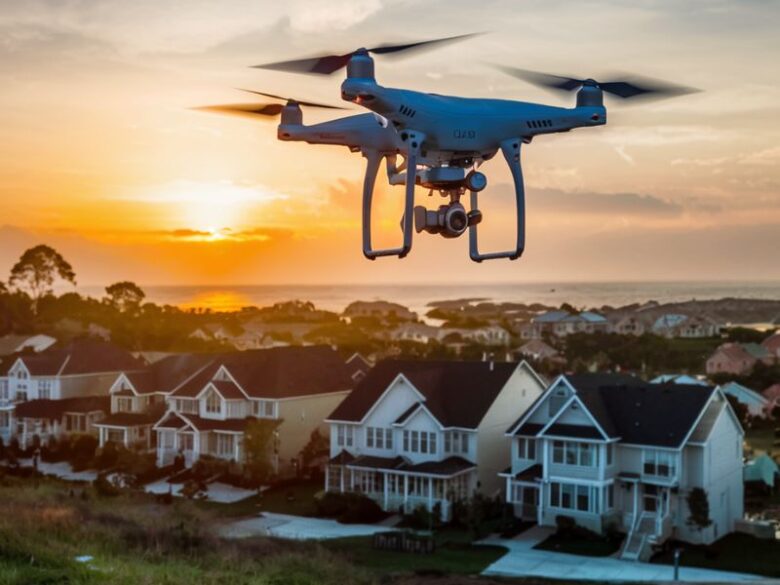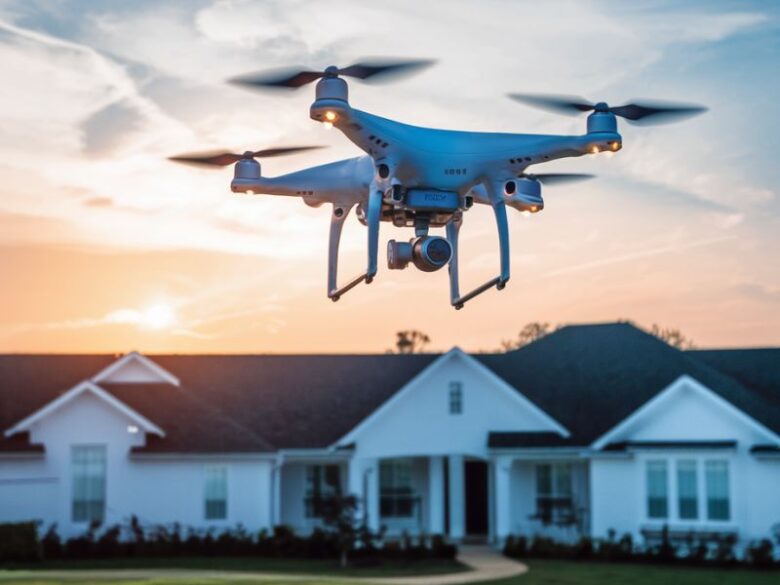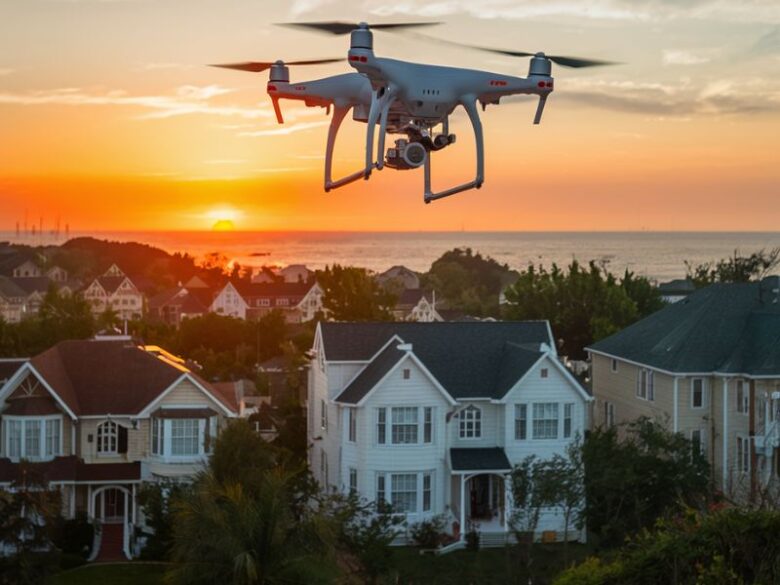Imagine glancing over a property and its sprawling surroundings, taking in a panoramic view that outlines every curve and corner of the neighborhood. This is the vivid reality brought to life through aerial photography, a game-changer that elevates the appeal and narrative of properties.
If you are wondering if aerial photography and other advanced visual technologies could up your real estate game, the answer is a resounding yes. This post will explain why a growing number of real estate agents are beginning to see things from a more advanced perspective.
Contents
Beyond the Static Perspective
The modern audience is spoiled for choice when it comes to consuming content, and static images alone may not be enough to captivate their attention. People now seek a more dynamic and immersive experience. This shift towards interactive engagement is reshaping the real estate industry, with buyers wanting to dive deep into what a property has to offer through virtual tours and aerial experiences.
To stay relevant, real estate professionals must adopt and integrate new technologies to meet these evolving expectations, ultimately transforming the way they present properties.

Aerial photography reshapes our understanding and presentation of properties. By revealing natural landscapes, neighboring developments, and proximity to amenities, it tells a comprehensive story. From green spaces to city skylines, aerial photography creates an expanded narrative, drawing potential buyers into a visual journey that ground-level photography often cannot capture. Such a holistic representation allows buyers to fully appreciate the scale and potential lifestyle the property offers, transforming their perception from mere interest to an emotional connection.
Immersion is Imperative
Progress in technology has enabled the use of drones not just for aerial photography but also for creating immersive virtual tours. Services like real estate drone videography offer potential buyers the rare opportunity to explore properties remotely, providing a detailed and interactive view of the property’s interior and surroundings. This approach helps in not only showcasing the property’s best features but also in saving time for both buyers and sellers. Furthermore, the ability to highlight the flow between indoor and outdoor spaces adds an invaluable dimension that encapsulates the lifestyle experience.
To further enhance the immersive experience, augmented reality (AR) and virtual reality (VR) technologies are becoming increasingly popular. AR involves overlaying virtual elements onto the real-world environment, allowing potential buyers to visualize how a property could look with different interior designs, furniture arrangements, or even color schemes. Meanwhile, VR transports users into a simulated environment, giving them the opportunity to explore properties as if they were physically present. Using these technologies, potential buyers can truly envision themselves living in the property.
Enhancing Buyer Engagement

In a competitive market flooded with hundreds of properties, aerial and drone photography can transform the way properties are presented and perceived in the real estate market. Buyer engagement is a crucial benchmark for success, and the use of immersive technologies such as aerial photography, drone videography, and 360-degree photography can significantly increase buyer engagement and, ultimately, the chance of a successful match between property and purchaser.
When showcased through the unique lens of such advanced visual technologies, properties stand out from conventional listings, attract more attention, and garner increased inquiries. The detailed and interactive viewing experience allows potential buyers to get more of a feel for their potential investment, from lighting and airflow to essential amenities and neighborhood dynamics. This gives buyers more information to make an educated decision and more confidence when pursuing the property.
Cost-Effective and Accessible
While the thought of advanced photography technology might conjure images of excessive expense, technological advancements have made it surprisingly accessible. The decrease in drone prices and the availability of skilled operators have brought high-quality aerial imagery within the reach of many real estate professionals. This cost-effectiveness means that properties of all sizes can benefit from the unique perspective aerial photography provides. Instead of having to invest in drones, seek drone training, or hire in-house operators, real estate agents can now easily hire professionals for the job.
If properties are empty, virtual staging can be used to transform them into furnished, inviting homes using digital editing techniques. Instead of incurring the cost of physical staging, which involves renting furniture and hiring interior designers, virtual staging is a more cost-effective solution. This not only saves money for the real estate agent and property owner but also saves valuable time and logistics. In addition, virtual staging allows for greater flexibility in customizing different interior design options to potential buyers, increasing the likelihood of attracting a wider range of interested parties.
Legal and Ethical Considerations

As aerial and drone photography in real estate flourishes, it is important to acknowledge the legal landscape governing airspace usage. Regulations vary by region, affecting how and where drones can be flown. Anyone planning to utilize aerial photography in their real estate marketing should familiarize themselves with the local laws and obtain any necessary permits or certifications.
There are also ethical considerations to keep in mind. These surround the accurate representation of properties. While advanced photography techniques offer the ability to enhance imagery, it is crucial that these enhancements do not mislead potential buyers. Transparency and honesty in how a property is presented are paramount to maintaining trust in the real estate industry.
Furthermore, real estate professionals must ensure that their use of augmented reality and virtual reality technologies complies with intellectual property laws and respects the privacy of the viewers who use the program. Failure to do so could result in legal consequences and irreparable damage to the professional reputation of the real estate agent or company involved.
Conclusion
As we look towards the horizon, advanced visual technologies continue to redefine the real estate landscape. Their capacity to blend technical prowess with artistic expression offers fresh perspectives that enrich property listings and provide immersive viewing experiences.
These innovative tools are not just about capturing properties from different angles; they help to weave visual stories that complement the narrative of each property and set the stage for successful sales. Whether through the lens of a drone or the expertise of a 360-degree photographer, the sky’s the limit for the potential of advanced visual imagery in real estate.
